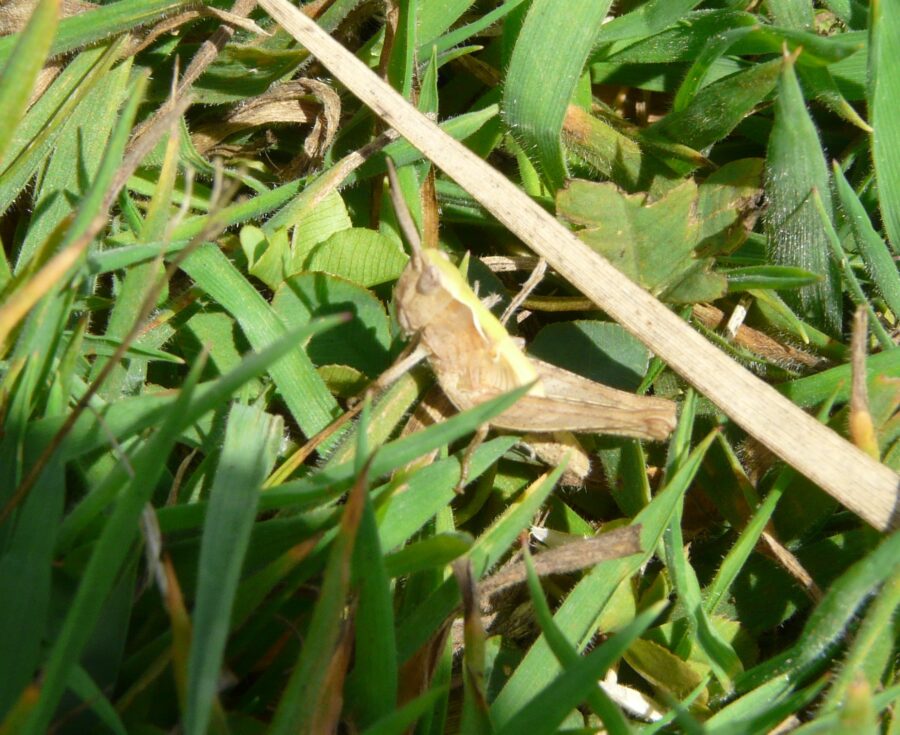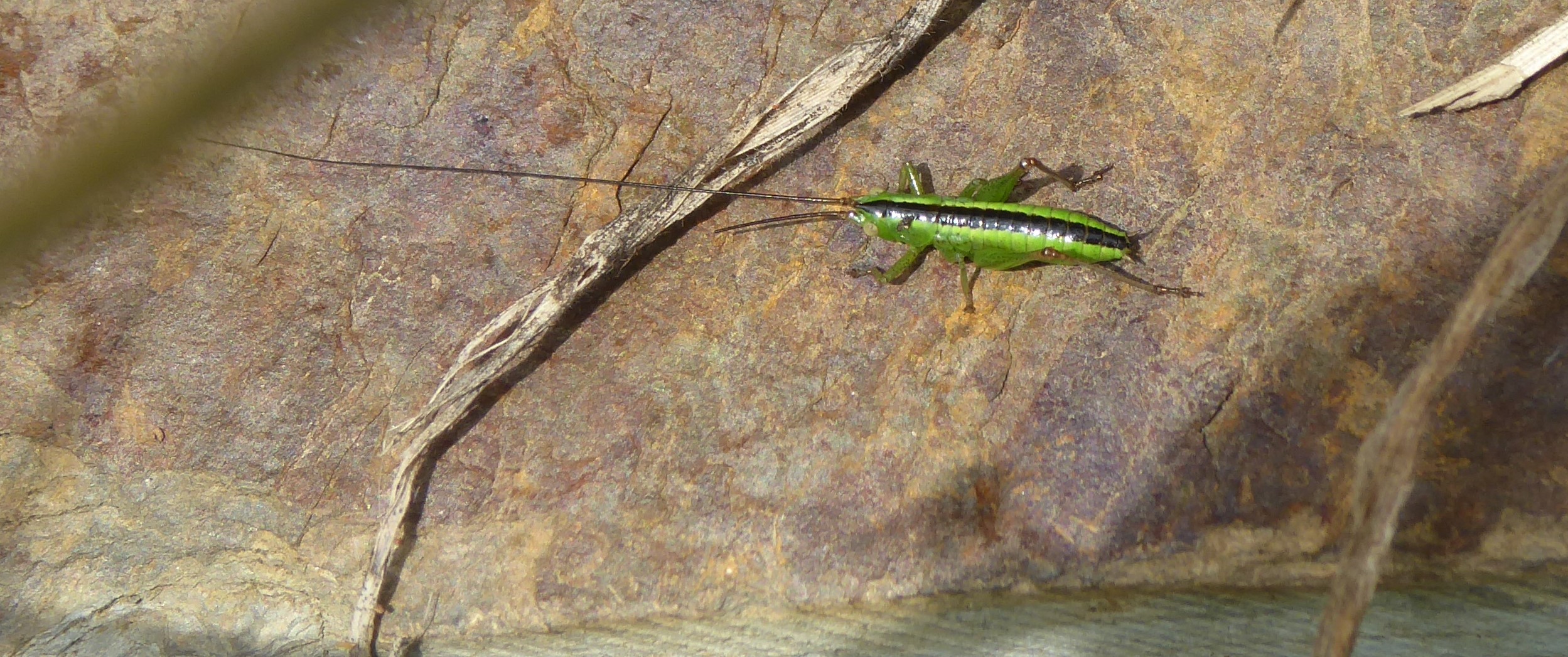In between showers on Sunday, we went for a walk round the watermeadow still trying to photograph flying things, like butterflies and birds. I definitely need practice at locating and focusing quickly. However, we spotted grasshoppers a-plenty – and managed to get photos of the Common Field Grasshopper and the Common Green Grasshopper. They were nestled in the undergrowth, which makes for confusing photos as you realise how good their camouflage is. On the internet, I found a guide to identifying grasshoppers: ‘Identifying Grasshoppers, Crickets and Allies in Beds, Cambs and Northants’ produced by the Wildlife Trust of Bedfordshire, Cambridgeshire, and Northamptonshire.
I had to look at the antennae and the pronotal, which is a plate on the back of the head and upper back (thorax), edged by two lines. It’s the shaping of those two not-exactly-parallel lines, which is key to determining some of the grasshopper varieties.
In a simpler format the Wildlife Trusts website says, “The Common green grasshopper is mostly green, but sometimes has brownish sides.” It is supposed to be a bit scarce but is found in grass in wetlands – and we do tick that box. Also the pronotal lines are nearly parallel.


The brown one, then, is the Common Field Grasshopper. Brown with a green stripe. The above description could easily apply but look at the pronotal – it has a definite ‘waist’ marked by the pale stripe. This means that it should be the Common Field Grasshopper.

But what about the feature-creature at the top of the post? That is not a grasshopper, but a Conehead – a type of bush cricket – with a cone-shaped head, obviously. This one, who looks as though it has one snapped antenna, is a Conehead nymph. I know this because of the thick black stripe down its back. It will turn into a Long-winged or Short-winged Conehead. The nymphs eat grass flowers and immature seeds, and the adults eat seeds of grasses and sedges.
